I had an American made Die Mark. It still gave me the fits. Extremely hard to start. As said somewhere else by Tony. The Dies we get are not true Dies, they are thread chasers. To start the Die I used a piece of round stock between it and the tail stock.
"Billy G"
To answer all the questions above. The import die looked the same on both sides so I could not tell which side was to start. I picked one and cut about three threads and it would not go any more. I turned it around and it worked much better. I can't see the difference but there must be one.
To start it straight (especially with that high tech die holder), I put the die against the shaft and backed it up with the flat side of my QCTP and used the carriage to put pressure on the die as I started it. Once it is started , it is going to follow that path, straight or crooked. The QCTP held it flat and started it straight. ( I have used this method before I made a die holder for the tail stock). I was really impressed with this cheap $10 die. It started easy and it made really good fitting threads and nice and sharp and clean. I was surprised, but it takes a lot to turn a die that large. The hardest part was keeping the part from turning in the chuck.
To set up the collet taper ( cut using the compound) I had a 17/32" hole in the end of the part as it was still set up from the turning. I put a 1/2" center in the collet with the point into the hole. This centered that end. The other end of the collet had a 1/2" dowel in it that was chucked in my live drill chuck for the tail stock. This centered that end. I set the compound for 10 degrees and used it to run an indicator along the side of the collet. when the indicator reads zero the length of the collet, the angle is set. Then I remove all the junk ... er I mean .... precision set up equipment and cut the taper with the compound. This was all done before the threading. I did the threading last so I couldn't knock anything out of whack. After all this thing has to be very concentric and spin true. I have everything within .0005"
I probably should have taken photos doing all this but never thought of it as I was tightly puckered, sweating, and concentrating on not screwing up a spindle I spent a lot of time on.

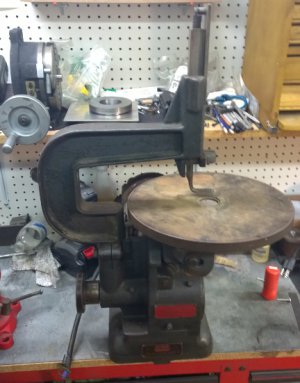
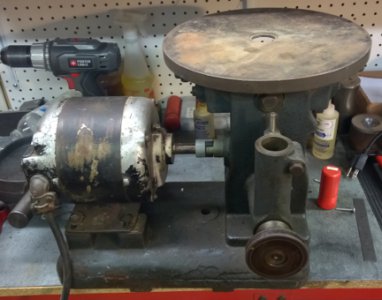
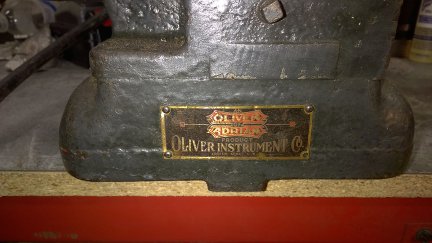


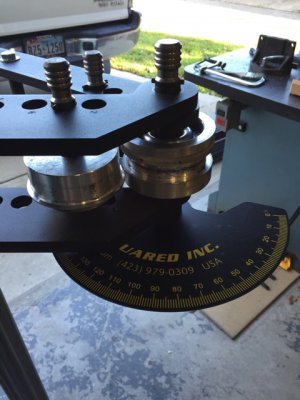
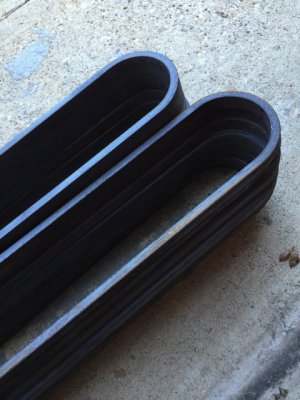
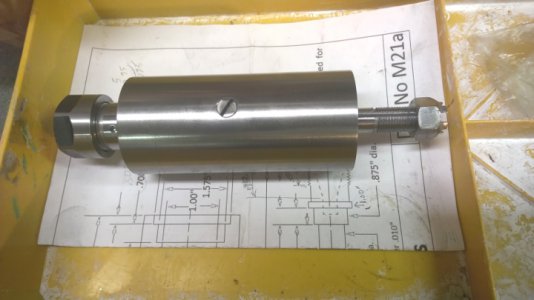
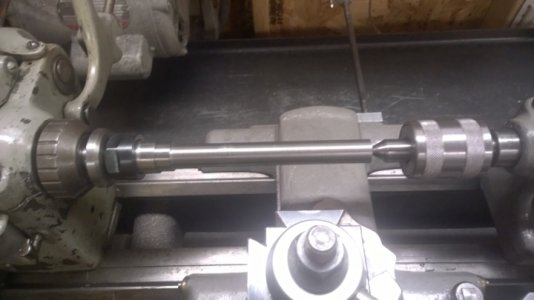
 I got close and polished with emery cloth.... the bearing is a stiff hand press in
I got close and polished with emery cloth.... the bearing is a stiff hand press in  ......
...... . After I cooled down a little , I thought .... the bearing is 12 mm wide....I will bore deeper .250" and get it right, that will hold the bearing and just move it in .250" more. I bore a cut and check fit, bore and check fit, getting close bearing sticks in the end of the bore...... Oh rats... it seems to be stuck... I'll give it a little bump out to get it loose and .... OOPS!!! the angular contact bearing comes apart and the little balls are rolling all over the shop floor
. After I cooled down a little , I thought .... the bearing is 12 mm wide....I will bore deeper .250" and get it right, that will hold the bearing and just move it in .250" more. I bore a cut and check fit, bore and check fit, getting close bearing sticks in the end of the bore...... Oh rats... it seems to be stuck... I'll give it a little bump out to get it loose and .... OOPS!!! the angular contact bearing comes apart and the little balls are rolling all over the shop floor